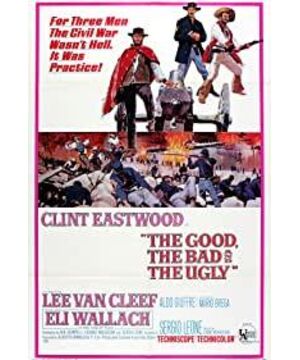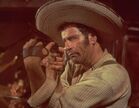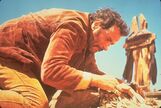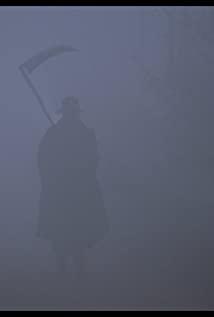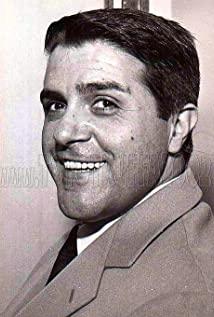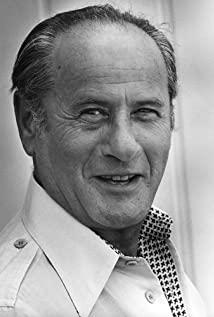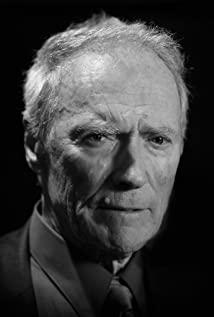"The atmosphere of a period of time can last for a long period of time, and there is no fundamental change. That is tradition." If we apply Mr. Qian Zhongshu's comment to the history of film development, we will find this The first formula is also adaptable-the audience's interest that can be investigated in a certain period and the relatively stable development of the film industry have made genre films the most creative product under the commercial production mechanism of major Hollywood studios. Western films are the most prominent of them. One is also beginning to gain the favor of the audience. However, just like the "tradition" itself, there is also a contradiction in the development of Western films. On the one hand, it is not willing to change easily, so it restricts the style obviously, and uses its unique elements to compare with other types. Keep the piece away. In fact, "The Train Robbery" directed by Edwin Bout in 1903 has already chosen the format for future Western films: galloping horses, trains, pistols, long-distance competitions, and the climax of the film. The heroes of justice are fierce. Defeat evil in a duel. Since then, Western films have been able to freeze their traditional style with their remarkable sense of speed and reckless male power. But on the other hand, it has to change. The ever-changing viewing trends of the audience and even the increasingly complex background of the times are driving Western films to start to innovate. Under such a compromise, it tries to absorb more elements, so as to achieve the effect of making a facelift. The new westerns that emerged in Italy in the 1960s are in fact in the stage of improvement. Even the anti-western films that appeared in the later period of parody satirize the routines of traditional western films, and even reinstilled new moral judgments for the audience from the film values. Genre films developed anti-genre films to further promote their self-sublation, just as the times gave birth to reformers in the era of change, and from the perspective of the development process of western films over the past century, the audience of western films is just like the common people in the reform era. ——Undoubtedly become the biggest beneficiary.
Bazin believes that western films are "a form of searching for content." It is not so much a generalization of the western film and the entire genre mode, it is more a tactful criticism of it. Due to the excessively distinctive material in western films, how to organize these contents spontaneously has become a breakthrough point in western films, and the director's own quality largely determines the direction of the film. The father of Italian director Leone is also a well-known Italian director. His father’s influence makes Leone the youngest assistant director in the area. In cooperation with major directors such as William Wheeler and Orson Welles, he started from Italian neo-realism and Hollywood epic films have found the balance of his own style, coupled with his reversal of the bridge and dialogue of John Ford’s works, and his attention to male friendship as the only child of the family. "Song" has become a classic representative of Western films, and the last film "The Good, the Good and the Good" filmed in 1966 has been marked with a clear personal imprint of Leon.
Ⅱ "When the legend meets the reality, leave a legend."
Although westerns are a form of formalism, most westerns do not pay attention to narrative innovation. "The Good, the Good and the Three" still adopts the classical model derived from theater and follows the general pattern of western movies. It consists of three parts: foreshadowing, conflict, and conflict resolution, which constitute a complete plot. Leone even gave up the later flashbacks in "Once Upon a Time in the West" and developed completely in a linear sequence. But in part, the screenwriter used the "centripetal model" to form a series of dramatic conflicts.
Leoni did not hesitate to use half an hour to introduce the appearances of the three protagonists representing the good, the bad and the ugly, but no matter from the detailed plot or the combination of the characters, the three stages of appearance are not the same-"The Ugly Man" "Only one scene was used for the appearance: a group of bounty hunters sneaked into the wooden house where the wanted ugly man was, and after a few gunshots, the ugly man broke the window and fled. In this piece of content, the protagonist’s shots only flashed at the moment when the window jumped; the appearance of the "bad guy" relied more on the cooperation of other actors: the hired bad guy killer accidentally learned about Bill from the subject before completing the task. In the case of Carson and the huge treasure, the bad guy killed the informant according to the employer's request, but killed the employer according to the request of the deceased before his death, so he was paid twice. This paragraph uses two scenes to highlight the cunning and perilousness of the bad guys, and the time has to be filled a lot; in the end, the appearance of the "good guys" is more detailed, and a way for the good guys and the ugly guys to accompany the appearance is arranged: the good guys save the ugly guys who have been besieged and suppressed. He personally escorted him to the sheriff's office in exchange for the bounty, but when the bad guy was about to be executed, he shot the rope and led the ugly person to escape. In such "games" over and over again, the amount of reward continued to increase, and the income of the two increased accordingly. Until one day, good people think that there is no way out for ugly people to do so and abandon them in the desert. The difference from the previous two paragraphs is that the appearance of good guys reaches the highest level in terms of scene changes, number of characters, and length of time. It even intersperses with the plot of bad guys who see through the tricks of the two on the way to find Bill. The director used such an opening to slowly extend the plot, but there is no lack of comical and alertness.
During the next hour and a half of the development of the film, the screenwriter cleverly designed the encounter of the three protagonists. The bad guys always searched alone for the Southern Army where Bill Carson was in order to get the treasure; the ugly guy finally caught the good guy in revenge and took him across the desert, trying to kill him. The elation of the ugly guy and the torture of the good guys became clear. Compared. At this time, the screenwriter created the most wonderful coincidence for the audience-the two met in the desert, Bill, who was dying due to the defeat of the army, and the ugly man learned of the cemetery where the treasure was buried, but he had to fetch water to rescue him. When Bill was able to obtain the exact name of the tombstone, the same dying good man learned the answer before Bill died, so the ugly man who was still torturing the good man had to save him. After that, the two were dramatically involved in the Northern Team, and the bad man happened to be too. Follow this up. As a result, the three originally irrelevant people each hold part of the information about the treasure, which is doomed to be forced to cooperate but they are jealous of each other until the bad guys are shot and killed in the shootout at the climax of the film, and the good guys and the ugly guys share the property and bid farewell. The second half of the film focuses on the various elements of western films that attract audiences: the carefully designed gun battle, the competition between escape and chase in the river valley, and the final duel between justice and evil all bring a strong form of movement and rhythm effect to the previous plot. The deliberately carved form and delicate style have found the perfect fit, so the whole work has new meaning and expressive space in form and content, thus creating a western legend with a predictable ending and a brilliant process. .
In addition to the ingenuity of the plot arrangement, the script also played a role in shaping the characters in the dialogue. The so-called "good dialogue always brings good hearing", the dialogue of ugly people is mixed with a lot of humor. For example, in his dialogue with good people, he said, "There are two kinds of people in the world, one is hanged, One is to cut off the sling.” In the following plot, this sentence is constantly imitated such as “there are two kinds of spurs in the world” and “the people in the world can be divided into two categories”, which seem to be repetitive but not wordy. In addition, a large number of vulgar words and curses show the rascal character of ugly people incisively and vividly. In contrast, the lines of good people are very few and very short, with strong emotional changes; the words of bad people are obviously threatening, even if When he pretends to be gentleman and polite, the audience can also distinguish the dangers he covers.
Audiences familiar with Western films can often find the screenwriter’s innuendo of the film’s theme created by the screenwriter in order to cause the ups and downs of the plot. After retreating from the upcoming gang but constantly suffering from indifferent avoidance, he finally became lonely and disappointed; in "The Searcher", Essen, who has been searching for his niece abducted by the Indians for many years, found that the other party had been with him. When the Indians merged, their previous concerns and anxieties instantly turned into resentment and hatred. In Leone's "The Good, the Bad and the Ugly", this contradiction is secretly penetrated through the transformation of the positions of the three protagonists-when the good guy appears, he is always the leader of the story. It is not so much that whether the gun in his hand can shoot the rope that hangs the ugly person determines the gain or loss of the ugly person’s life, but he guides the development of the whole plot; and in the passage of the ugly person and the good person through the desert, the ugly person on horseback People obviously dominate good people with excessive hunger, thirst and festering faces. The director captures the natural landscape in a scene with only two people, and sets off the oppression of the character with the endless desert as the background. After the three-person barracks meet, the bad guys begin to gain the upper hand, and he uses his own position to face the ugliness. People tortured and asked about the whereabouts of their treasures, and with a threatening attitude to hunt for treasures with the good people; in the latter part of the film, the ugly people and the good people are united, and their strength continues to increase. In the end, all conflicts are ended with the death of the bad people. All in all, the dominant role in the previous scene is likely to be at a disadvantage in the next shot. Such an uncertain relationship lays a temporary suspense for the film and makes the audience's mood fluctuate; it does not favor any role. It also increases the authenticity of this western legend in reality.
Ⅲ "I just like montage"
A director’s style often draws a significant line for his films, and Leoné’s film style is concentrated in his western films. "The Good, the Bad and the Ugly" is different from the other two films. The plot is slow and not procrastinating to create three hours of detailed content. In order to reflect his preference for time, the director did not hesitate to shoot a dog crossing the camera in 16 seconds. Just the sinking of the opening ten minutes will be able to see the shadow of "Once Upon a Time in the West" in the future, and the silence created by the character's taciturn invisibly increases the mental fatigue of the audience. Contrary to this, Lang Ang Nei uses fast panning from the other extreme for scene scheduling, which fully embodies the gripping plot tension. For example, when the bad guys arrived at the cemetery and ran looking for tombstones, a group of fast pan shots shot with a telephoto blurred the background of the characters. The clusters of soldiers’ tombs that flashed past once again alluded to the allegory of war. The soundtrack brought the film to a climax.
As one of the innovators who attach the most importance to editing language, Lionel likes to use editing in a similar shape. For example, when an ugly man aimed his muzzle at a chair on which a good man was stepping in a hotel, the next shot was cut to the muzzle of the cannon being fired, creating a comedy where the hotel was bombed at a critical time. Many westerns are used to ending with the fiercest gunfight. In "Noon", Kane finally killed the gang with the help of his wife. At the end of "Sunset Yellow Sands", the vigorous bullets in the barracks produced countless corpses. These plots concentrated a large group of people to reach the peak of momentum. The final showdown of "The Good, the Bad and the Ugly" was completed by only three people, but the plot in this second was forced to be edited by the director to produce 74 shots: first, an ancient Colosseum-like distant shot was given, and the opponents were dispersed in 32 seconds. Come, and then the camera fixes the position of the opponent from the back of the three. Afterwards, a series of mid-range, close-range and close-up switching at medium speeds focused the audience's attention on the character's pistol and eyes. As the rhythm of the soundtrack gets more and more exciting, the editing becomes shorter, until the bad guys fall down and the music stops abruptly. This famous passage that became a commentary by the American Film Academy creates a strong atmosphere of tension and is a manifestation of the expressiveness of wide-screen composition.
Regardless of the magnificence of shooting skills, the wonderful soundtrack by the master Enio Morricone has rendered many highlights in the film. The theme music that appears in the opening of the film runs through the various segments from time to time, but the two simple melodies are produced by trumpets, whistles and even human voices with different sound effects. Whistle music has always been a common form of folk songs in American western movie music. It has a strong sense of emptiness and expansiveness in the west, and the waves of higher than waves appear to be noisy and not chaotic. In the scene of the war, the low wood pipe and the soft piano are combined with each other, and the melancholy and soothing soundtrack has become a soft lament, pulling the camera slowly to the distance where the soldier fell. The help of image and music brings a distinctive feature to "The Good, the Bad and the Ugly".
Ⅳ "I have never seen so many people dying meaninglessly."
The deep symbol of Western films lies in the deification of the history of the Western United States, which reflects the national character and spiritual tendency of Americans. It depicts a country where there is no law but guns. There is no order and only power in the western society. In fact, the formal establishment of the theme of Western films has reached the 1939 John Ford's "Flying across the Mountain". The western films at this time combined "the history of the western development with social legends, traditional scene scheduling and the real psychology of the characters", showing the conflict between the most fragile and despicable side of the human character under extreme pressure and the noble and valuable side. Therefore, Western films mostly adopt hints. The creators assign opposite roles such as justice, fairness, loyalty, cowardice, cunning, and fierceness to achieve the dual purpose of persuasion and entertainment. "The Good, the Bad and the Ugly" to a large extent also represents this left-wing ideological feature.
If Quentin uses his loop structure in "Pulp Fiction" to show the change of identity of the same person on different occasions, then Leone uses "The Good, the Bad and the Bad" to show the complexity of human personality. The literal translation of the film's title "Good, Evil and Ugly" is just a general division of the character of The Good, the Bad and the Bad. In fact, the audience did not really discover his "goodness" until the end of the good guy's appearance. On the contrary, we even saw later that when the ugly man told the good man the address of the grave where the treasure was buried according to mutual agreement, he revealed the wrong information out of distrust of the ugly man; even if the two finally arrived at the destination, he I also want to take the last chance to kill the opponent with a cannon. Such plot design makes the personality represented by good people flawed. In the same way, ugly people’s comics are cute and revealing the frustration of life; bad people’s cruelty is also obscured by their wisdom-three very different characters have been instilled with more complicated personality traits than their names. In fact, a good person is good because he will not use any means to achieve witness, and will not kill innocent people indiscriminately in order to destroy the enemy; bad guys are evil because he has become indifferent to others’ feelings for the benefit of others. Consider; ugly people know both sides, so loyal and honest also have rebellious cunning. For example, there is a scene in the film: a good man handed a cigar to a dying soldier, took off his coat to cover the cold body of the opponent, until the soldier died with a smile. This scene with no lines and only actions clearly allows us to experience the true caring heart of good people. Clint Eastwood, as a well-known character actor at the time, was even more heroic. With his quiet but calm voice and calm movements, he successfully interprets the image of a good cowboy.
In addition to using roles to imply themes, the director also used ugly words to express the extreme pressure of the entire western society. When the ugly man reunited with his missionary brother, whom he hadn’t seen for many years, his brother condemned him for leaving his hometown and having no care for his relatives. In place, if you don’t want to starve to death, except to be a priest, you are a bandit. You choose your path, and I also choose mine. What I choose is much harder than you.” This episode is by no means redundant, it shows it in a comprehensive manner. The sorrow of the wanderers hidden in the Great West, respecting the different choices made by different people under the same life pressure from a neutral point of view, is both perverse and helpless.
The entire film is set in the American Civil War, and Leonie himself has expressed his affirmation of the violent revolution. In the film preparation stage, Orson Wells tried his best to discourage this proposition, thinking it was a "cursed subject." In fact, if we downplay these plots, it is also a standard Western movie without losing interest, but it is precisely because of the existence of the civil war background that the whole work has changed from pure humor to serious, and the theme also includes several cowboy stories. Sublimated into a reflection on the war and compassion for the people. In order to make full use of this background, the film paved the way for the bad guys to track Bill Carson. The fatigued troops that appeared from time to time along the way, together with the dilapidated environment in which they stayed, described the difficulties of the war. The most worth mentioning is that the director reflects the importance of people and life through the two scenes of war in the rear and the front. In the prison camp, a disabled captain blames the bad guys who abused the prisoners and asks to be banned at least while he is alive. The occurrence of this kind of thing. Here too, when the bad guys tortured the ugly, the prisoners outside the house were ordered to play music to cover up the screams inside the house. In Leon's sympathetic lens, tears flowed from the captive's eyes. The film at this time does not focus on condemning or admiring the two sides of the war, but focuses on the soldiers who have participated in the war. In addition, the 30-minute satire of a bridge blasting battle brought more thoughts to the audience-the drunk captain knew that this was meaningless, but he knew that only by completing this task could the war end and stay. Live the lives of subordinates. Where the camera swept, the corpses were densely covered like seeds of death. The war at this time is meaningless, whether it is black or blue, and whether it is justice or injustice. For politicians, it is no more than a corpse; for soldiers, it represents all of themselves.
Ⅴ "There will still be newspapers tomorrow"
Swedish film master Ingmar Bergman was quite conceited when he was young. When he finished filming "Ship to India" in 1947, he thought it was a masterpiece, and even showed it directly without editing, but suffered a fiasco. . The hard-fought Bergman was unconscious for the criticism in the newspaper, but his friend comforted him and said: "There will still be a newspaper tomorrow." This sentence is rich in here and yet euphemistic comfort can actually be used as a whole Narration of the tortuous development history of westerns. Although all the rage Western films brought audiences many chic and majestic shots and created countless heroes who came out of the west, these films composed of confrontations and legends did not get professional evaluation so smoothly-even if they often said " John Ford, who introduced himself as a "Western", is also hard to find a western film in the works that won him four Oscars for Best Director. For Leone, who made the "The Red Guardian Trilogy", "The Good, the Bad and the Bad" became the highest-ranked foreign film on imdb, ranking fourth; Quentin, who emphasizes violent aesthetics, also listed his ten favorite films. Put Qi in the first place. But what cannot be ignored is that "Red Dead Redemption" first encountered a wave of bad reviews in Italy, and then "The Fistful of Twilight" and "The Good, the Bad and the Gold" were successively criticized by the French "Feature Film" magazine. "Van and pretentious." It wasn't until 1982 that Italy made a positive comment on the director, but at this time it was only seven years after Leone's death.
Why do you often feel the need to change the Western movie model? Because the director's methods often make the same mistakes. Since it is not enough to deal with the same subject in different ways, we can only apply the same technique to different subjects. However, this is actually impossible, and the elements of the western film itself often limit its content. As a type of standardized production, its subject matter has always been relatively simple. The crude production of western films in the golden age also affected the image effect due to their low cost, which eventually caused them to fall into the quagmire of speech. Audiences are not all experts. People pay attention to the story and plot for entertainment purposes, but they inevitably leave a routine impression of "good guys defeat bad guys." As a result, the difficult development of Western films makes "every day duel audience tired and heroic too." tired."
Now it's an era of declining western films. In recent years, most of the few works have been remakes, and the outstanding ones are even rarer. In such a tumultuous movie world, we are not simply calling for its return, but at least we still hope that the classics of the past can be properly preserved and still retain their value. After all, if history has not been retained in the hearts of the audience, it is truly lost. Therefore, we look forward to the new audience to rescue the westerns, just like the heroes who walked out of the west.
2009 Nian July 1 to 5
text / Xiao Yi Wen
View more about The Good, the Bad and the Ugly reviews


